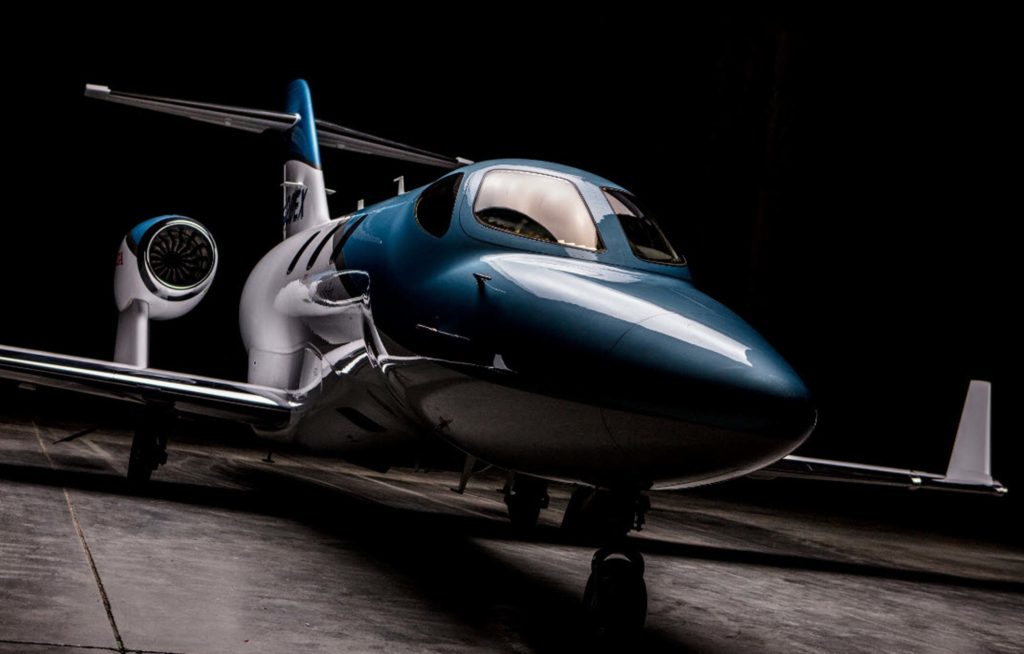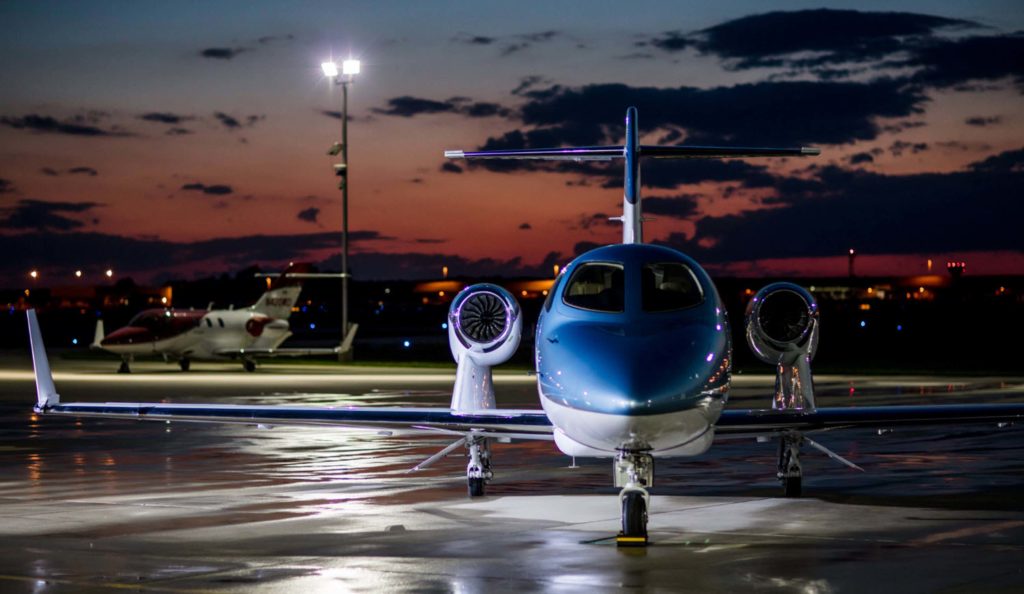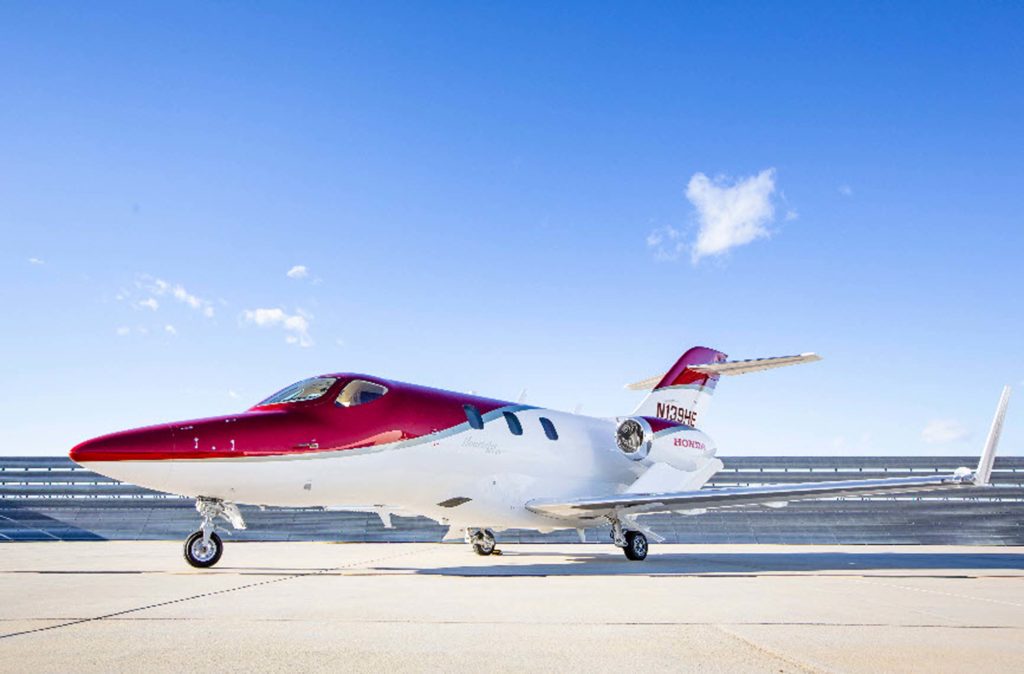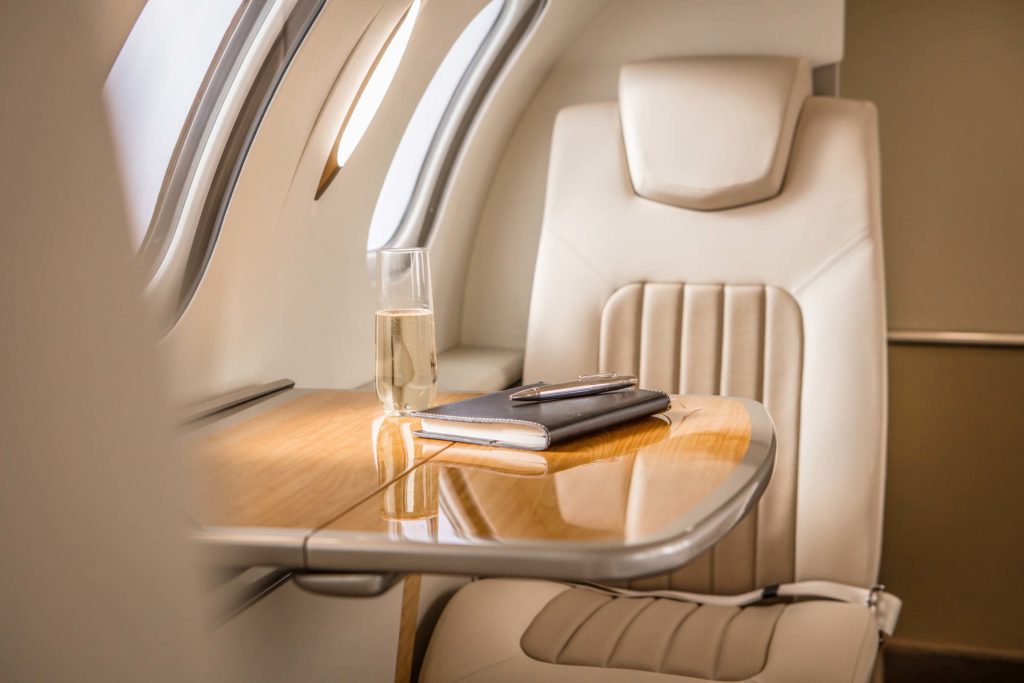HondaJet Elite: In the cockpit


“The HondaJet is not only a great plane, it’s also a lot of fun to fly. It’s a perfectly designed hot rod and beautifully executed machine which will stand the test of time.” ~David Zara, Aviator
Setting up the cockpit is easy. If you can operate an IPad you can make the Garmin 3000 sing. It’s intuitive and the controls are so visible you wonder why no one thought of this years ago. A few more goodies have been added to the electronic Next Gen system. Take-off/Landing Distance (TOLD) calculations are now incorporated into the avionics and rendered effortless. It provides automatic computation of required runway length, V speeds and Climb/Approach gradients for performance calculations to keep you legal and safe. The new weight and balance calculator is a joy to operate and graphically depicts where in the safety envelope you stand. Climb, Cruise and Descent VNAV calculations are now depicted on the screens for easier flight planning and more efficient and timely approaches. Further sweetening the electronic gift bag is a feature linking your Garmin Pilot App or Foreflight App to your iPhone or iPad. You can download flight plans from fltplan.com just as easily, allowing you to flight-plan at home or on the go and save time.
Soon it was time to taxi out. It took me a little getting used to steering with the pedals. They are sensitive and at slow speeds can turn you 60 degrees from centre. At speed they narrow your operational range to four degrees, and at 80 knots quit working all together lest you mistakenly decide you want to experience hopping across runways and taxiways right or left.

Acceleration is on par with its pocket-rocket moniker and soon you find yourself rotating and aiming for the sky. Climb is a no-stress and exhilarating 4000ft per minute and the controls are well balanced, but still very crisp. You don’t really fly this thing – you wear it.
Fuel flows are ridiculously low. At 25,000 feet we were still climbing at 2,500 feet per minute and only burning 610lbs a side. That’s micro-jet numbers, but in a considerably larger plane. At high altitude cruise the HondaJet sips a total of 600lbs an hour. Let me repeat that. It burns less than 90 gallons an hour while cruising at Mach 0.70 to 0.72. That’s turboprop fuel-burn numbers at jets speeds, and it confirms this plane was designed well from birth.
We were given a climb to Flight Level 310, where the plane felt rock steady. A steep descent to the twenties proved 10,000 feet per minute may be extreme by most standards, but someone forgot to tell this baby what extreme means. The speed brakes are exceptionally efficient, though I would have liked them to be linear rather than having two détentes – extended or retracted. Milking speed brakes is a time-honoured tradition among pilots to expedite things or correct for mistakes and these will keep the secret and not advertise anything amiss to passengers.

Approach Control soon cleared us for an ILS 23L at the Greensboro Airport. We decided to test the go-around protection designed into the system. Go arounds are a busy and stressful time for most pilots. Even though it doesn’t have auto-throttles, the HondaJet offers a high level of protection. A go around is automatically sequenced when you press the GA button on the throttles. Should your speeds get low the Underspeed Protection (USP) system will drop the nose to prevent a stall. This happens before the stick-shaker and pusher do their thing to save you and the plane. The system is called Automatic Flight Control System and it offers both Roll and Angle of Attack protection. Think of it as a good Samaritan watching over you.
While in flight, I took the opportunity to go back in the cabin and sample the environment. It’s surprisingly quiet thanks to an innovative approach to engine sound reduction involving perforated honeycomb sandwich inlets to reduce and attenuate fan blade passage noise.


There is also a great sound system featuring the Bongiovi Aviation speakerless stereo. The system is integrated into the backside of the interior panels and offers passengers an immersive audio experience. It even replicates vibrations. No discussion about the cabin would be complete without mentioning the luggage capacity of the HondaJet. There is a small and perfectly serviceable nose compartment, good enough for a few bags, but a salient advantage of the over the wing mounted engines becomes apparent when you open the rear luggage hold. It’s disproportionately large for an aircraft this size and suddenly all those arguments back home about not bringing golf clubs and snowboards fade into a smile.
In conclusion
The HondaJet is not only a great plane, it’s also a lot of fun to fly. It’s a perfectly designed hot rod and beautifully executed machine ready to stand the test of time. And lest you are tempted to think of this little jet as a toy, remember this machine can take you from Dubai to Ankara or Addis Ababa, Riyadh to Athens, and Bahrain to New Delhi in one hop.






